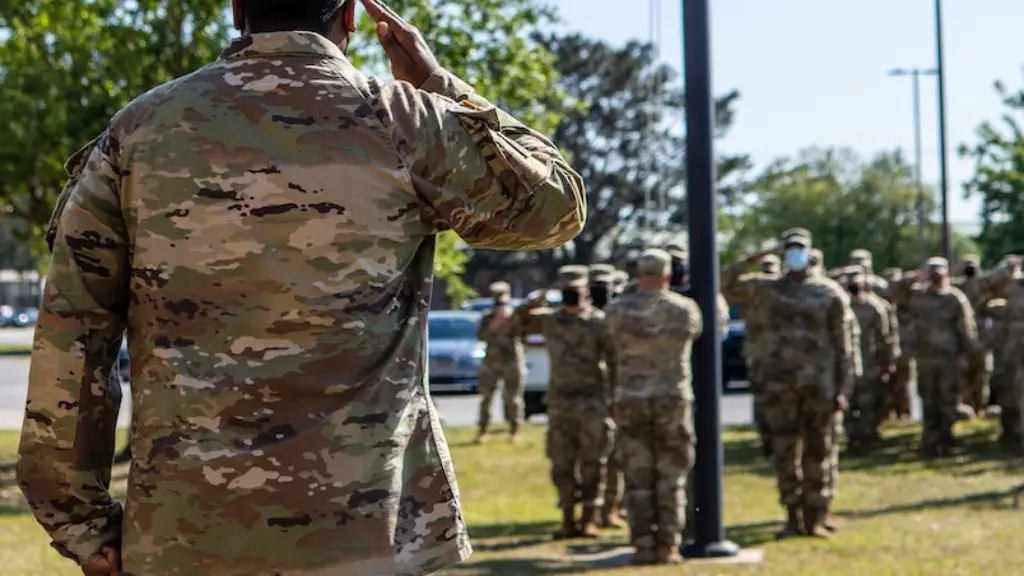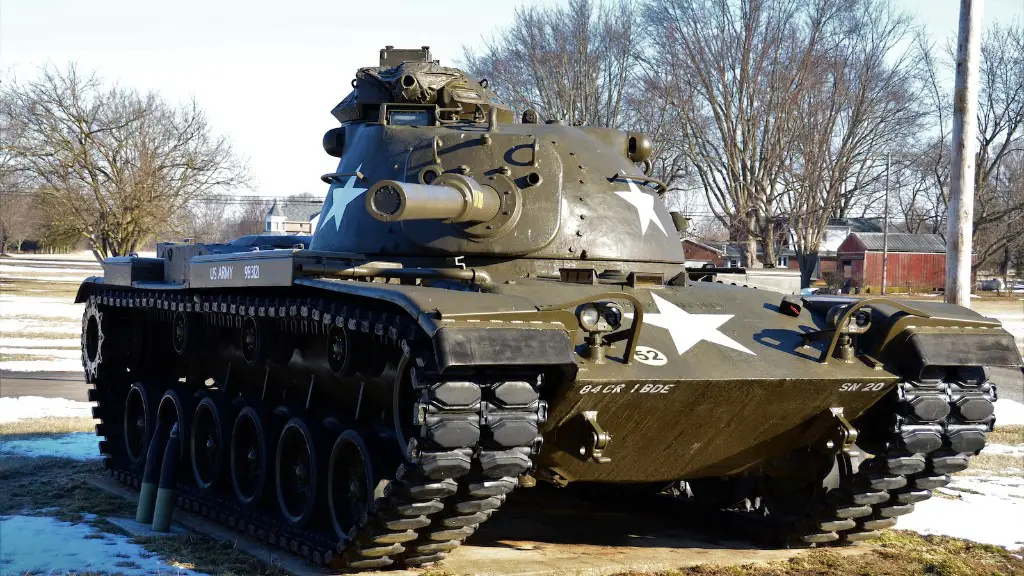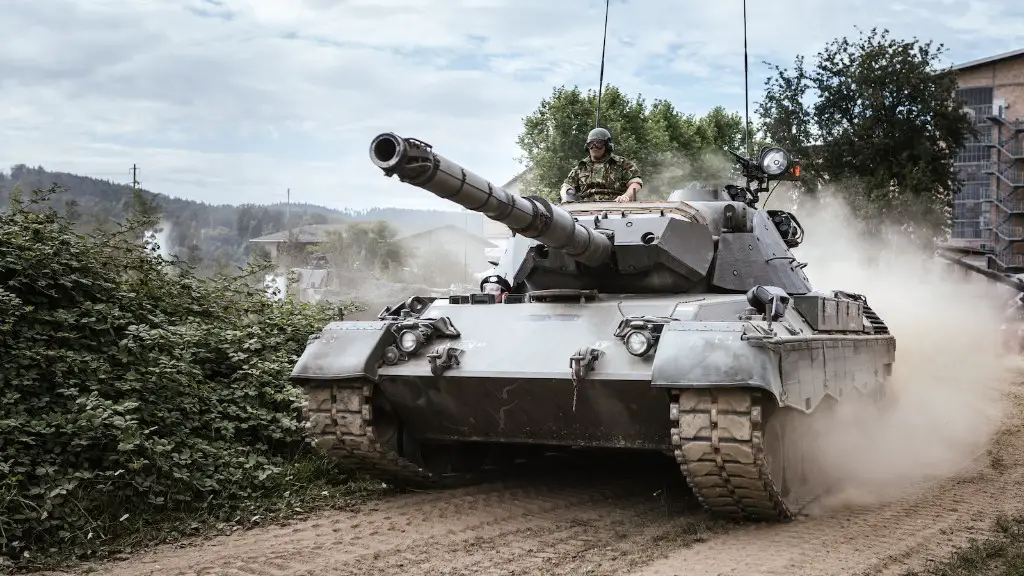Background Information on The Chinese Army
The Chinese Army, formally known as the People’s Liberation Army (PLA), is the largest standing military in the entire world with an estimated total number of 2,183,000 active personnel. The Chinese Army is divided into the land, naval and air forces, with the land forces making up approximately 85% of them. In addition to this, the Chinese military is also made up of reserves, volunteer/paramilitary forces, coast guard and auxiliary services. By size, the Chinese Army is much bigger than the US Army, which has only 1,369,532 personnel in active service.
Recruitment and Training
The recruitment process in the Chinese Army is highly competitive with only a selection of recruits making it through the selection process in the end. In recent years, the Chinese Army has implemented cutbacks in its recruitment of personnel, with the military generally focusing on only recruiting adults between 18-25 years of age. All recruits have to undergo a rigorous physical training and assessment process as well as participate in a range of specific courses, such as combat and soldiering. Prior to participating in their specific military program, all soldiers are expected to take a compulsory oath, pledging to protect their nation and “carry out orders from the People’s Liberation Army and the Chinese Communist Party”.
Components of The Chinese Army
The Chinese Army is composed of a number of component units, with the most significant being the ground forces. These include the People’s Liberation Army Ground Force (PLAGF), which is the largest branch of the military, made up of 90 divisions and 60 brigades. The PLAGF is responsible for defending China’s territorial integrity, providing support and assistance to other military branches and providing internal security in times of emergencies. The Navy is another component of the Chinese military, with its primary role to defend against naval threats posed by other countries. The air force, meanwhile, is responsible for protecting the country’s airspace and providing support to other branches of the military. In addition to these main branches, the Chinese Army also has specialized forces as well as reserves.
Modernization of The Chinese Army
Over the past two decades, the Chinese Army has undergone a significant modernization process. This has involved the acquisition of new weapons systems and the development of training and doctrine. In terms of new weapons systems, the Chinese Army has acquired a range of modern tanks, aircraft and missiles. In the past few years, the Chinese Air Force has been steadily increasing in size, with the purchase of a new fleet of fighter jets and bombers, as well as the implementation of an advanced early warning system. In terms of training and doctrine, the Chinese Army has focused heavily on gaining “real battle experience”, with its forces taking part in a range of exercises and engagements in recent years.
The PLA and Fighting Unconventional Battles
The Chinese Army is not only focused on conventional warfare, but is also heavily involved in fighting unconventional battles in various regions of the world. In recent years, the PLA has dispatched forces to areas such as Pakistan and Iraq, to assist in peacekeeping efforts or help with the rebuilding of infrastructure in the aftermath of civil wars or terrorist attacks. The Chinese Army has also taken part in exercises with other nations such as South Korea, and has a strong presence in the East and South China Seas, where it is involved in the territorial disputes with its neighbours.
Role of Technology In The Chinese Army
The Chinese Army has embraced the use of new technologies in recent years. This has included the adoption of advanced cyber warfare capabilities, artificial intelligence and the development of a range of unmanned aerial vehicles and robots. The Chinese Army is also utilizing sophisticated satellite systems and a wide range of sensors to gain intelligence on its adversaries. In addition, the Chinese Army has also implemented a range of new battlefield tactics and training methods, such as the use of drones, virtual reality and simulations.
Innovations in The Chinese Army
The Chinese Army has made numerous strides in the past few years in terms of new technologies, training methods and tactics. It has also embraced new concepts, such as “swarm warfare”, which involves the use of multiple small unmanned platforms that can be deployed rapidly and is a low-cost solution for China in terms of technology and manpower. The Chinese Army has also begun to focus on developing new weapons systems, such as hypersonic missiles and underwater drones, whilst also increasing its presence in space.
Modern Strategies and Operations
The Chinese Army has continued to refine its combat strategies and military operations in recent years. This has included the implementation of new techniques such as the Three Warfares, which focuses on psychological, media, and legal warfare. The Chinese Army has also begun to experiment with new tactics, such as the use of drones, and has begun to utilize technologies such as virtual battlespace simulations, which allows soldiers to rehearse scenarios before they take place on the battlefield.
Manpower and Expansion
The Chinese Army is expanding in scale and has already surpassed the US Army in terms of total personnel. Though the Chinese Army is only enrolled with 2,183,000 personnel, this is far more than the US Army which has only 1,369,532 personnel in active service. China also continues with its focus on increasing the number of personnel and has even taken measures to enlist individuals from minority groups in recent years. Despite this, there is no clear indication on what the ultimate numbers the Chinese Army will reach.
Enduring Reforms and Challenges
Though the Chinese Army has undergone a significant reform, there are still various challenges that face the military. These include the need to streamline the military hierarchy, reform its command system and introduce a promotion system that is fair and merit-based, whilst also abiding by international laws and regulations. Furthermore, it is also a challenge for the Chinese military to promote greater coordination and interoperability between its various branches and to ensure that its personnel are trained to a high standard.
Innovative Equipment and Resources
The Chinese Army has invested heavily in the development of cutting-edge weaponry, with new forms of equipment being regularly released. These include multi-role aircraft such as the J-20 and J-15, as well as superior tanks, missiles and submarines. In addition, the Chinese Army has also made investments in artificial intelligence, robotics, 3D printing and automation. These advances have enabled the Chinese Army to operate more efficiently and effectively, whilst also allowing it to acquire new resources and capabilities.
Emerging Power and Influence
The Chinese Army is continuing to become more influential within the global military and political arena. This is largely due to its sheer size and the number of personnel that it possesses, but also because it is making a concerted effort to become a more modern and innovative military force. As a result, the Chinese Army is increasingly becoming active in international military operations and is being highly sought after by countries looking for assistance. Through its actions, the Chinese Army is slowly becoming a major player in the international military scene.



